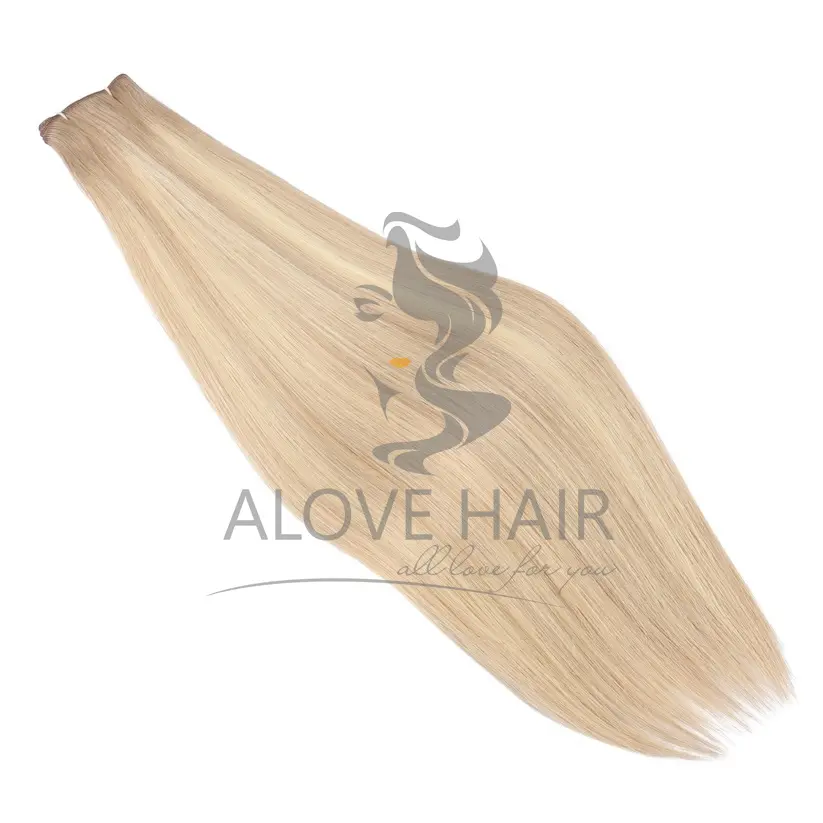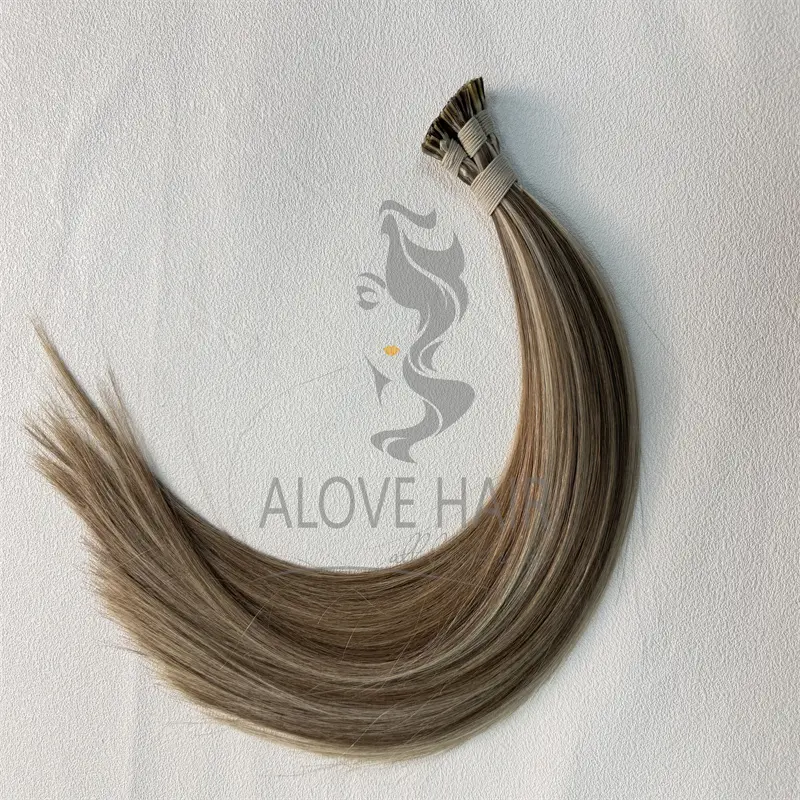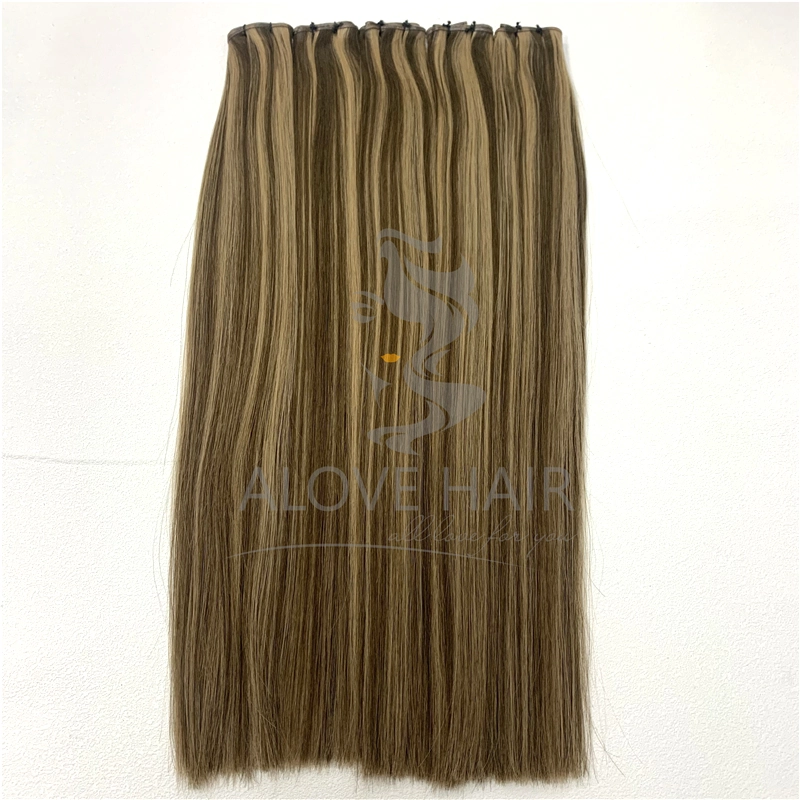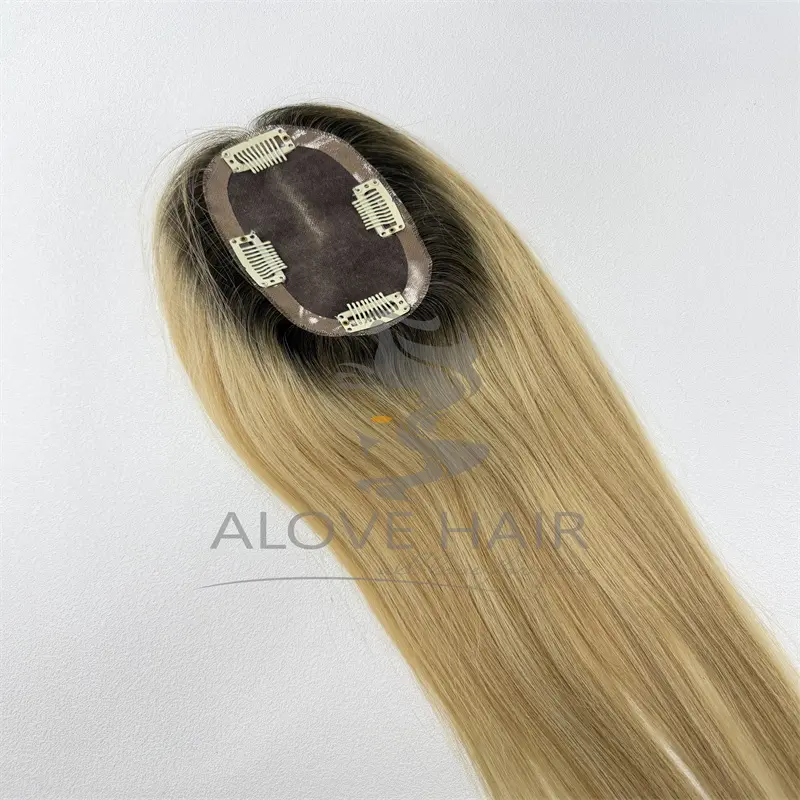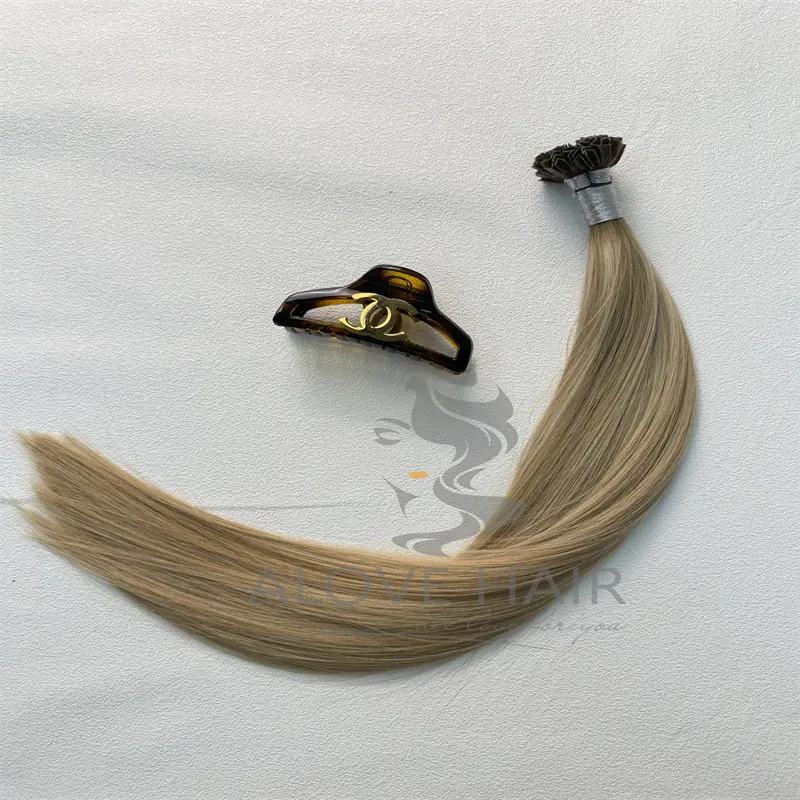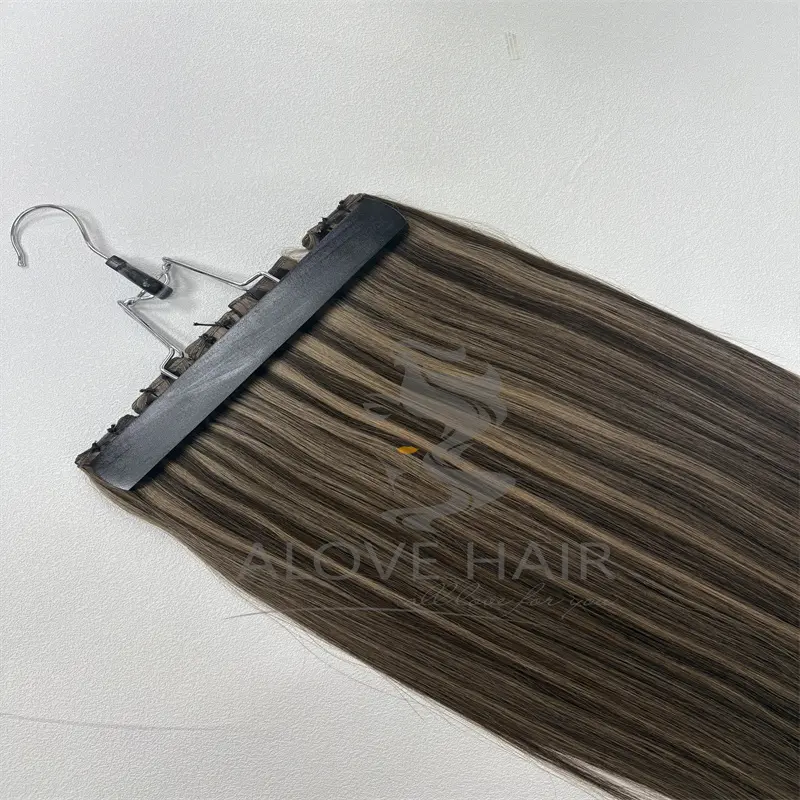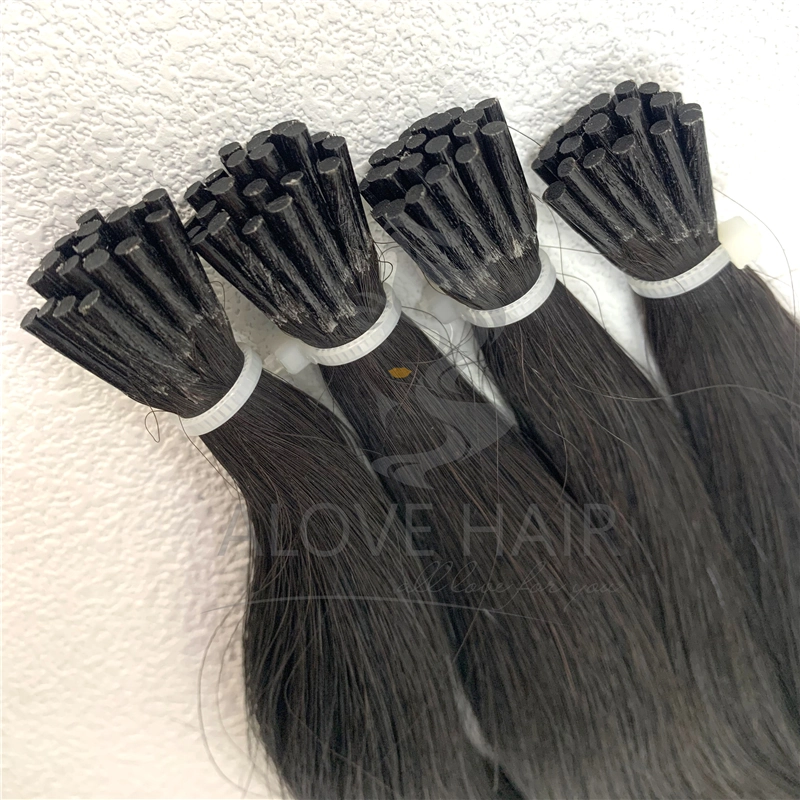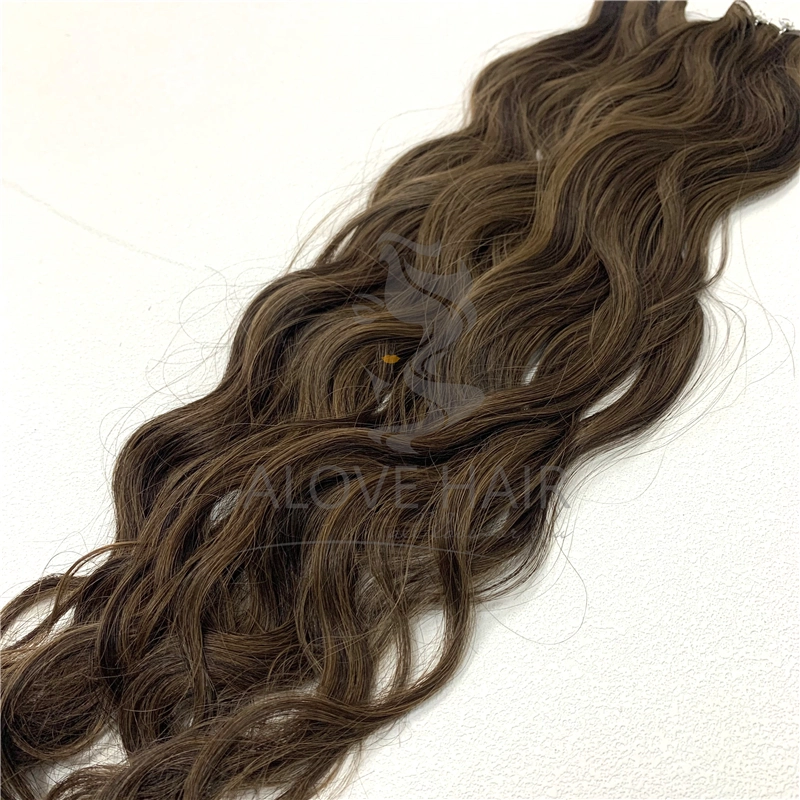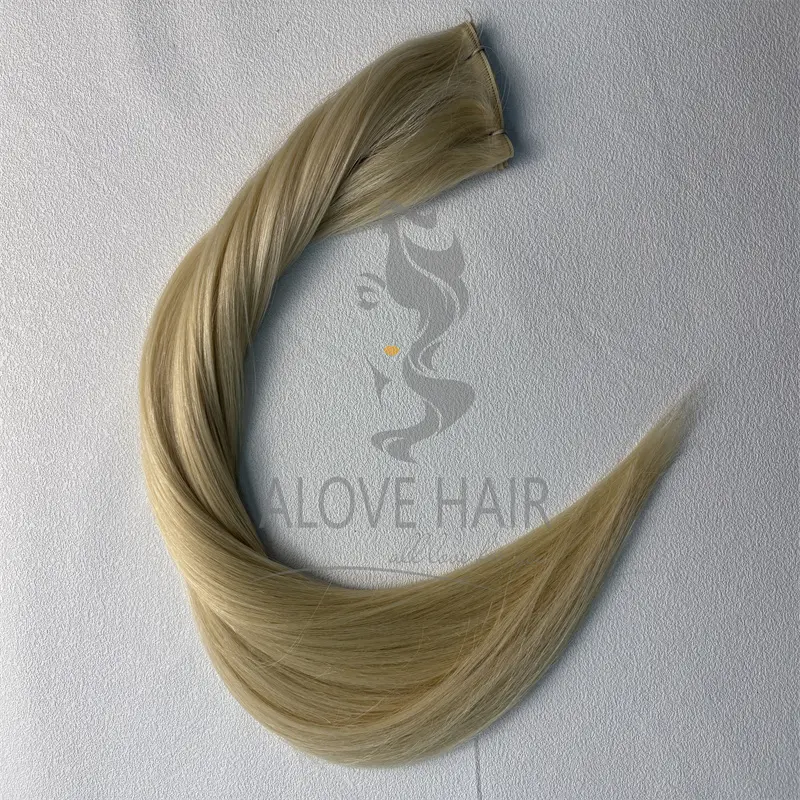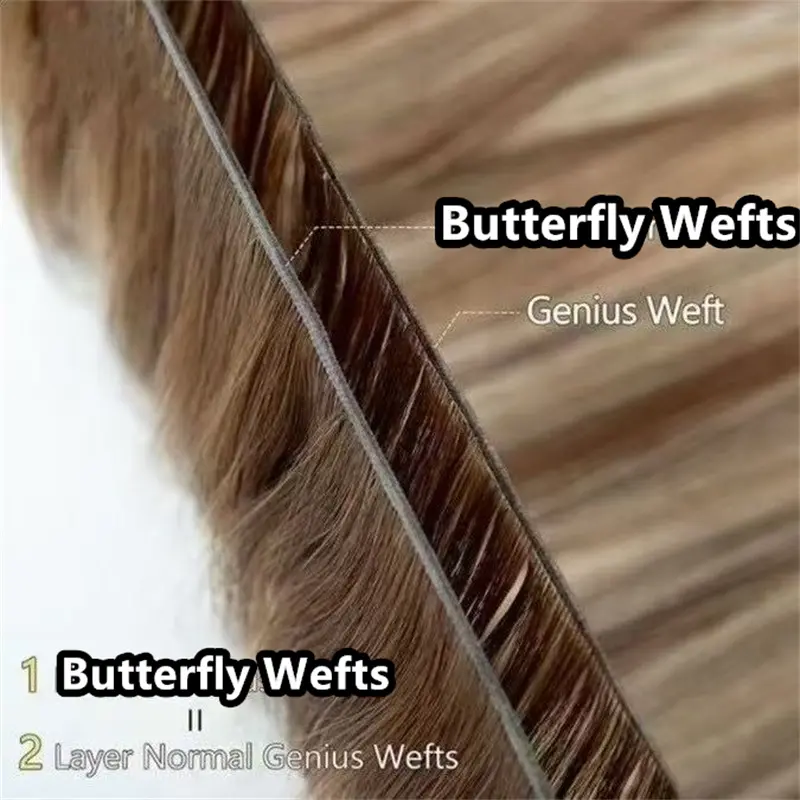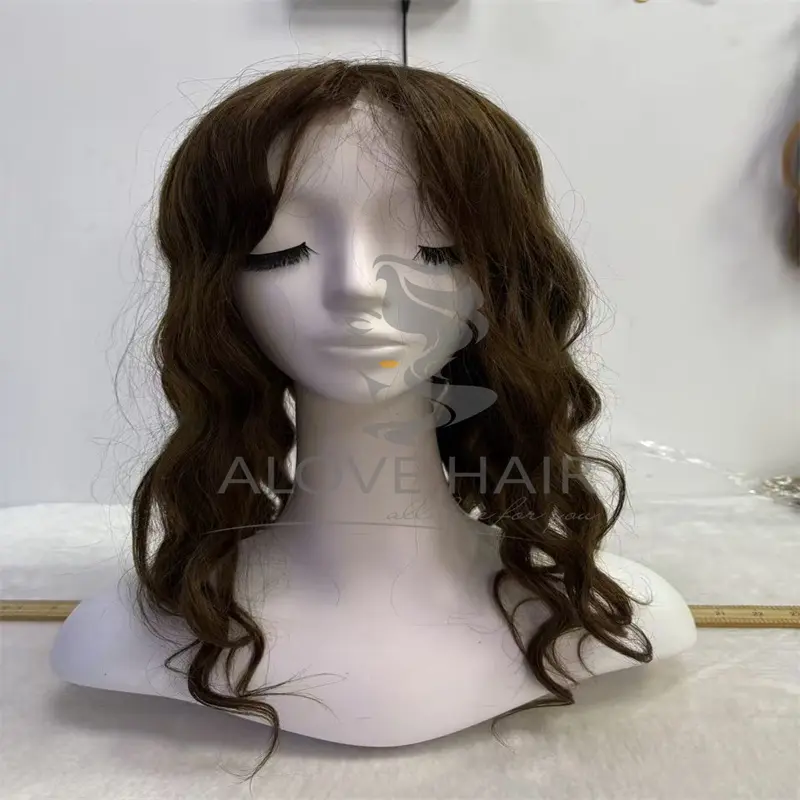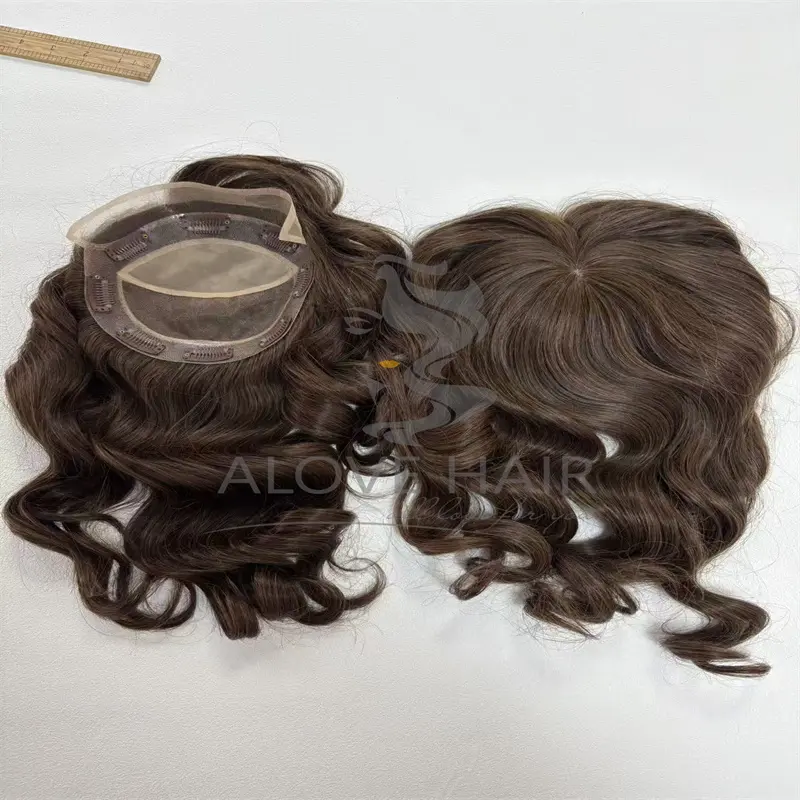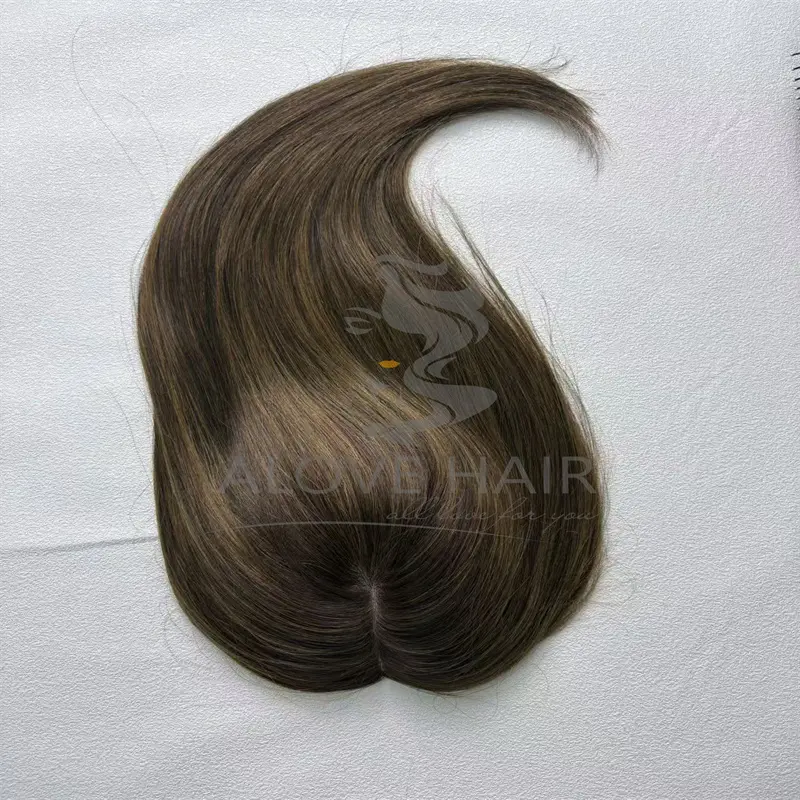Whether you’re looking to add length, volume, or cover thinning areas, weft extensions are a popular choice—but they’re not without trade-offs. This article dives deep into what they are, their pros and cons, and actionable advice to help you decide if they’re right for you.
What Are Weft Hair Extensions?
Weft hair extensions are thin, flat strips of hair (either synthetic or human) that are woven or stitched onto a thin, flexible base (usually silk or mesh). The “weft” refers to the stitching pattern that secures the hair strands, creating a natural, flowing look. Unlike bulkier extensions, wefts are lightweight and can be cut to match your hair’s texture and color, making them nearly invisible when properly applied.
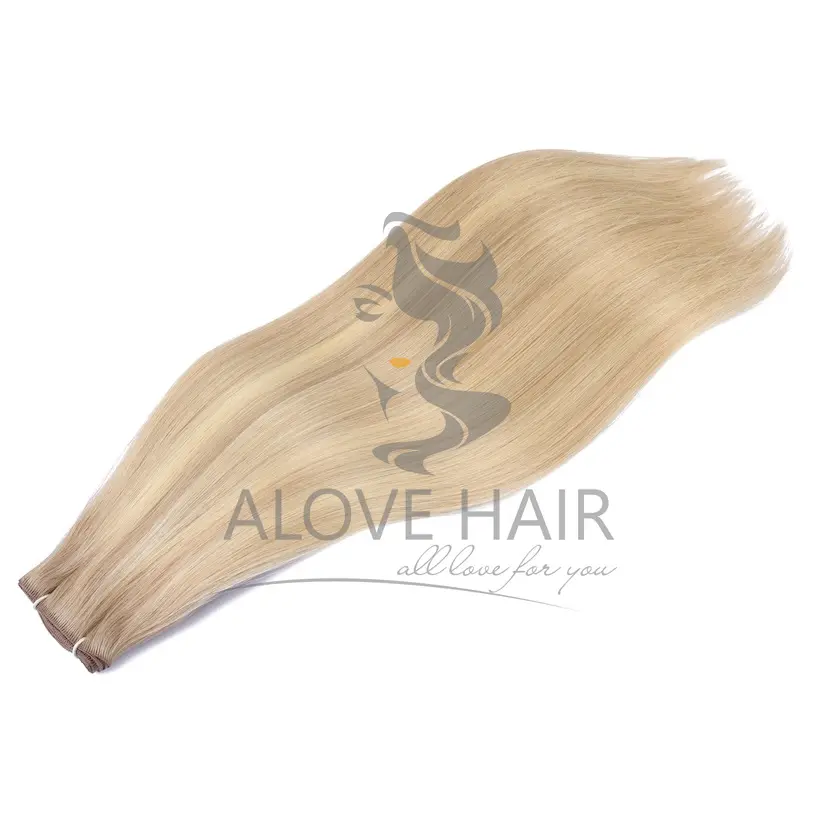
Common Types of Weft Extensions
Synthetic Wefts: Made from artificial fibers (e.g., kanekalon, toyokalon) – affordable, low-maintenance, and available in bold colors.
Human Hair Wefts: Crafted from real human hair (virgin or processed) – more natural-looking, can be styled with heat tools, but require higher upkeep.
Blended Wefts: A mix of synthetic and human hair for a balance of affordability and realism.
Pros of Weft Hair Extensions
1. Natural, Discreet Look
Weft extensions are designed to mimic the growth pattern of natural hair. When woven into your existing tresses, the thin, flexible base lies flat against the scalp, avoiding the “bulky” or “glued-on” appearance of other extension types. Synthetic wefts can even be dyed to match your hair color perfectly, while human hair wefts blend seamlessly with your natural texture.
2. Versatile Styling Options
Wefts can be used to:
Add length: Extend your hair by 6–18 inches.
Boost volume: Add thickness to thinning areas (e.g., crown, ends).
Create highlights: Blend in subtle color transitions (e.g., balayage effects).
Cover gaps: Hide thinning patches or scars without surgery.
3. Low Maintenance (Compared to Other Extensions)
Unlike glue-in extensions (which require daily touch-ups) or clip-ins (which need to be removed nightly), weft extensions are semi-permanent. With proper care, they can last 2–4 months before needing repositioning or replacement. Synthetic wefts are especially low-maintenance—they resist tangling and hold their shape even after washing.
4. Gentle on Hair and Scalp
Weft extensions don’t use harsh adhesives (like glue) or tight clips, which can damage hair or cause scalp irritation. The lightweight base distributes weight evenly, reducing stress on your natural hair. For those with sensitive scalps, silk-weft extensions are particularly gentle.
5. Cost-Effective for Long-Term Use
While human hair wefts have a higher upfront cost (200–800 per set), they’re more durable than synthetic options (50–200 per set) and require fewer replacements. Over time, this makes them a cost-effective choice for regular users.
Cons of Weft Hair Extensions
1. Installation Requires Skill
Weft extensions are not a DIY project. The weaving process demands precision to avoid visible tracks, uneven tension, or damage to your natural hair. Poorly installed wefts can look “fake,” cause matting, or even pull out your own hair. Always work with a certified stylist trained in weft application.
2. Risk of Hair Damage if Not Maintained
While wefts are gentler than other extensions, improper care can still harm your hair:
Tension: If the weft is too tight, it can pull at the roots, leading to traction alopecia (hair loss).
Friction: Synthetic wefts can rub against your natural hair, causing split ends over time.
Moisture Buildup: Trapped moisture under the weft can lead to scalp itching or mildew (common with synthetic materials).
3. Limited Color Matching for Synthetic Wefts
Synthetic wefts are pre-dyed and may not match your hair color perfectly, especially if you have unique shades (e.g., red, pastel). Human hair wefts, while more customizable, require professional coloring to blend with your natural hue.
4. Not Ideal for Very Short Hair
Wefts need a base of healthy, at least 2–3 inches long to weave into. If your hair is very short (e.g., buzzcut), the weft may be visible at the roots, defeating the purpose of a “discreet” look.
5. Higher Upfront Cost for Human Hair
Human hair wefts are significantly pricier than synthetic options. For example, a set of 16” virgin Remy human hair wefts can cost 500–1,000, whereas synthetic alternatives start at $50.
Consumer Buying Tips: How to Choose the Right Weft Extensions
1. Determine Your Goals
Length vs. Volume: If you want to add length, opt for longer wefts (18”–24”). For volume, shorter wefts (12”–16”) with denser strands work better.
Occasion: For everyday wear, synthetic wefts are practical. For special events (weddings, photoshoots), invest in human hair wefts for a more natural, styled look.
2. Choose the Right Material
Synthetic Wefts: Best for budget-conscious buyers or those who want low-maintenance color. Look for “kanekalon” or “toyokalon” fibers—they’re durable and heat-resistant (up to 350°F).
Human Hair Wefts: Ideal for those who want to style with heat tools (curling irons, straighteners) or need a truly natural look. Opt for “virgin Remy” hair (uncolored, unprocessed) for the best texture and longevity.
3. Check the Weft Density
Density refers to the number of hair strands per square inch. For a natural look, choose a density of 80–120 strands/inch. For more volume, go for 120–160 strands/inch—but avoid overly dense wefts, as they can look “heavy” and strain your scalp.
4. Find a Skilled Stylist
Ask for recommendations from friends or read reviews of local stylists specializing in weft extensions. A good stylist will:
Assess your hair’s health (thickness, elasticity) to determine if you’re a good candidate.
Customize the weft’s color, length, and density to match your needs.
Install the weft using the “sew-in” method (stitching to a cornrow base) for maximum hold and minimal damage.
5. Plan for Maintenance
Synthetic Wefts: Wash every 4–6 weeks with sulfate-free shampoo. Avoid heat tools (they can melt the fibers).
Human Hair Wefts: Treat like your natural hair—use heat protectant, deep condition monthly, and avoid over-washing (2–3 times/month).
6. Avoid Cheap Imports
While $20 synthetic wefts may seem tempting, they’re often made with low-quality fibers that tangle, fade, or shed easily. Invest in reputable brands (e.g., Great Lengths, Balmain) or local stylists who use high-grade materials.
Final Thoughts: Are Weft Extensions Right for You?
Weft hair extensions are a fantastic option for those seeking a natural, long-lasting way to enhance their hair—but they’re not for everyone. If you prioritize ease of maintenance, a discreet look, and don’t mind investing in professional installation, wefts are an excellent choice. However, if you’re on a tight budget, have very short hair, or prefer a temporary solution, clip-ins or glue-in extensions might be better.
By understanding the pros and cons, choosing the right material, and working with a skilled stylist, you can enjoy the benefits of weft extensions without the downsides. Remember: the key to a successful weft experience is preparation, patience, and proper care.
Ready to transform your hair? Start by researching local stylists, reading reviews, and investing in high-quality wefts—you’ll be amazed at how natural and confident you’ll feel with your new locks!
